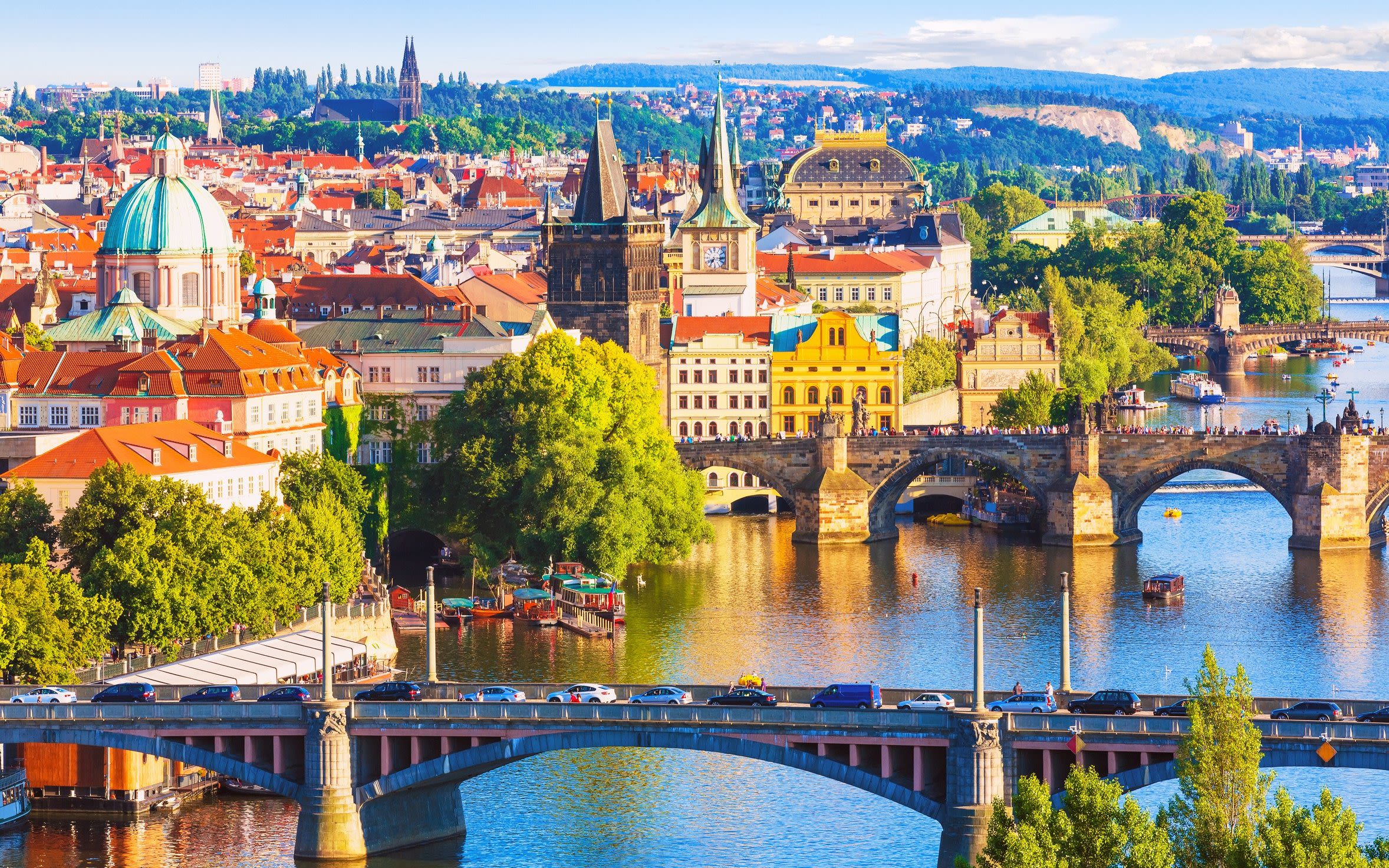Search results
News about IFSC World Cup, Iron Maiden, Prague 2024
News about Sparta Prague, Champions League, Salzburg
News about New Prague, Waconia, school bus
Also in the news
Prague is a political, cultural, and economic hub of Central Europe, with a rich history and Romanesque, Gothic, Renaissance and Baroque architectures. It was the capital of the Kingdom of Bohemia and residence of several Holy Roman Emperors, most notably Charles IV (r. 1346–1378) and Rudolf II (r. 1575–1611).
- Overview
- The landscape
- The people
Prague, city, capital of the Czech Republic. Lying at the heart of Europe, it is one of the continent’s finest cities and the major Czech economic and cultural centre. The city has a rich architectural heritage that reflects both the uncertain currents of history in Bohemia and an urban life extending back more than 1,000 years.
The physical attractions and landmarks of Prague are many. Among the finest is the Charles Bridge (Karlův most), which stands astride the Vltava River. The winding course of the Vltava, with its succession of bridges and changing vistas, contrasts with the ever-present backdrop of the great castle of Hradčany (Prague Castle), which dominates the left-bank region of the city from behind massive walls set high on a hill. The narrow streets and little taverns and restaurants of the older quarters contrast with the broad sweep of Wenceslas Square and modern parks and housing developments, while the great 18th-century Baroque palaces have their own elegance and splendour. Seen from the surrounding hills, the many church towers make up a unique perspective, giving Prague its description as the “city of a hundred spires.” This architectural harmony was enhanced by post-1945 planning, which preserved the ancient core of the city as a major monument and carefully supervised all modern building. In 1992 the historic city centre was added to UNESCO’s World Heritage List.
From its original small riverside settlements, Prague has spread over its hills, up river valleys, and along riverside terraces. The Prague metropolitan area covers 192 square miles (496 square kilometres).
Britannica Quiz
World Capitals Quiz
The city’s core, with its historic buildings, bridges, and museums, is a major centre of employment and traffic congestion. Around the core is a mixed zone of industrial and residential areas, containing about half the city’s population and nearly half its jobs. Surrounding this area is the outer city development zone, and beyond this is yet another zone of development containing new industrial areas, parks and recreation areas, and sports facilities. Finally, there is a belt of agricultural land and open countryside, where farms and market gardening projects satisfy Prague’s demand for food.
The lowest point in the city is 623 feet (190 metres) above sea level, and the highest point is 1,247 feet (380 metres) on White Mountain (Bílá hora). The climate of Prague is typically mid-continental, with temperatures there averaging 67 °F (19.3 °C) in July and 31 °F (−0.6 °C) in January.
Students save 67%! Learn more about our special academic rate today.
Prague has a homogeneous population. There is a small Slovak community, but the overwhelming majority of residents are Czechs. The city has a number of demographic peculiarities stemming mainly from the effects of World War II; there are more women than men, and a sizable proportion of the female population is past the age of fertility. The natural...
Prague is situated in the geographic center of Europe, earning it the nicknames “The Rooftop of Europe” and “The Heart of Europe.” With its golden-topped turrets and church spires, this enchanted metropolis is the fourteenth biggest in the European Union.
- Choose where (and where not) to stay. With its abundance of soaring spires and must-see attractions, Staré Město (Old Town) is a good-looking and convenient base – but don’t overlook Prague’s other neighborhoods.
- Pack comfy shoes and layers. Central Prague’s timeworn streets and alleyways are best explored on foot. Pack comfortable shoes that are cobblestone ready; high heels can lead to unfortunate pratfalls.
- The metro doesn't go all the way to the airport. Prague has an excellent affordable public transport system. Its main pitfall is that the metro doesn’t quite stretch to the airport.
- Pre-book your airport taxi for the best price. Opportunistic taxi drivers can be a problem. If you want to avoid hulking suitcases on and off buses, it’s best to arrange a transfer in advance rather than stepping into a cab outside the airport (or the main train station, for that matter).
Prague is located in the middle of the Czech Republic, which lies in Central Europe to the east of Germany and also borders on Austria, Slovakia and Poland. When you look at a map of Europe, you will find the Czech Republic almost exactly in the middle of the continent, approximately in the middle of the imaginary line connecting Italy and Sweden.
If you’re planning a trip to Prague, use our handy Prague map to get around and find whatever it is you’re after. Each location has something unique to offer, making a trip there a must. Get familiar with Prague with the help of this map of Prague before you go.




